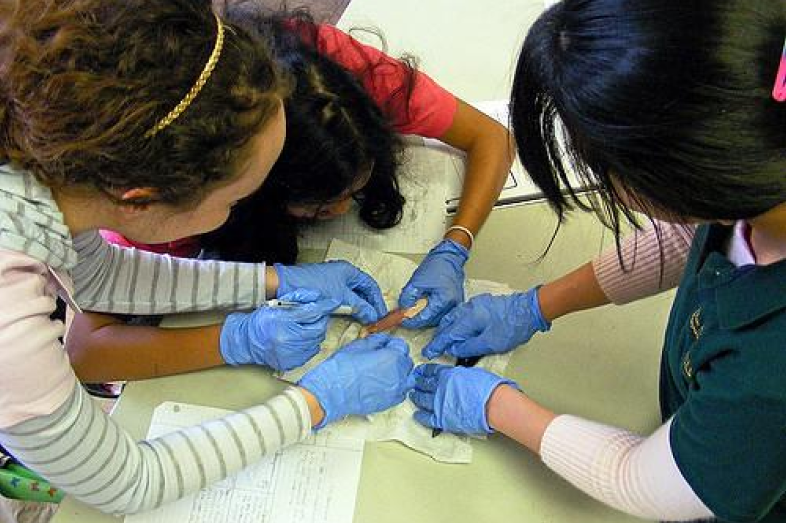

In some classrooms, students are learning deeply. These students not only master the subject, but they are able to articulate why they are learning about something and apply what they’ve learned to real-life situations. Advocates of “deeper learning” say the approach has become even more important in a changing economy that demands critical thinking.
Still, only about one in five classrooms emphasize deeper learning, a recent study of high schools across the country found. And these classrooms are more likely to be in private or public schools serving affluent communities.
The concept of deeper learning is “not exactly new,” but it’s taken on a greater urgency, researcher Jal Mehta said last week at the Education Writers Association national seminar in Boston. In order to vote, get a job or confront ethical questions, students will need to know more than how to find the correct answer on a multiple-choice test.
“The economy has shifted,” said Mehta, an associate professor at the Harvard Graduate School of Education. “These are skills that everyone needs.”
For “In Search of Deeper Learning,” a study of schools that are aspiring toward rigorous, challenging and engaging instruction, Mehta and his co-researchers observed classrooms in 30 high schools and interviewed parents, students and teachers about instruction and learning. In total, they observed more than 750 hours of classroom time and spoke with more than 200 people in a range of high schools, he said.
Three elements – identity, mastery and creativity – have to come together for there to be what the researchers considered deeper learning, Mehta said. The researchers found that in classrooms reflecting this approach, the teachers ask appropriate questions but refrain from simply giving answers. The students grapple with uncertainty, with failure being a real possibility. As a result, the students do most of the mental work, and “create knowledge, rather than receive knowledge,” Mehta said.
The students in these classrooms enjoy coming to school, the researchers found. This contrasts with the general high school population, in which 70 percent of students surveyed said they were bored at school on a daily basis.
During his presentation, Mehta displayed a picture of a cross-section of an animal cell and asked attendees what they would look for in a classroom to know that students were engaged and learning about the cell. The answers included comparing the parts of the cell – the nucleus, ribosomes and vacuole – to other items, and asking students to draw a picture or describe what they’ve learned to another student.
The key to biology, Mehta said, is that everything has a function. In a deeper learning classroom, the students learning about an animal cell would be able to identify the task of each part of the cell, how it all fits in with one system, and what would happen to the system if one part of the cell was damaged or taken away. Students in these classrooms would be able to go deeper than simply writing down the name and definition of each part.
So why is deeper learning so rare? Mehta’s research points to several reasons. Few teachers have had their own experiences with deeper learning, so they may not know how to apply it in their own classrooms. The teachers who practice this approach likely learned it from their own experiences as a student.
An emphasis on standardized tests can take away an incentive for project-based learning within core courses, he said. Many adults the researchers spoke with talked about powerful learning experiences outside the classroom, pointing to extracurricular activities and electives as promising platforms for deeper learning.
The researchers found that the instances of deeper learning vary not only among schools, but within buildings, and even in different classes taught by the same teacher.
Mehta recalled a time when he and his colleague were discussing two classes they had observed. His colleague watched a “good class,” one with debates and student projects. He watched a “bad class,” where the teacher showed a Powerpoint presentation to students and asked them to answer fill-in-the-blank questions based on what was on the screen.
They soon realized they had observed the same teacher, but in two different classes on different academic tracks.
“There was more variation within schools than across them,” he said.